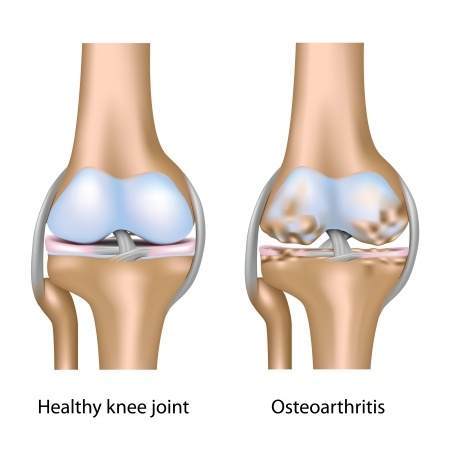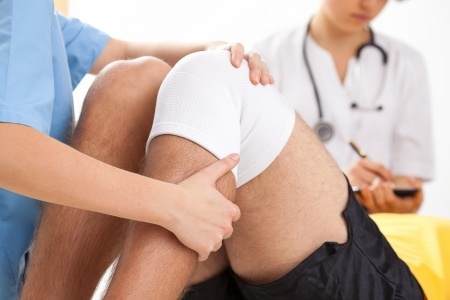The Painful Reality of Knee Osteoarthritis: Understanding Solutions

Exploring Solutions for Knee Osteoarthritis: Understanding Corticosteroid Injections
Have you recently received a recommendation for a corticosteroid injection to alleviate the discomfort associated with knee osteoarthritis? This decision can be crucial in managing your knee health, and understanding the implications is essential.
The Painful Reality of Knee Osteoarthritis
Living with knee osteoarthritis poses unique challenges as the cartilage surrounding the joints undergoes wear and tear, leading to a painful condition. The once-smooth cartilage becomes cracked, rough, and pot-holed, and irritating within the joint. This cartilage plays a pivotal role in providing cushioning and lubrication for smooth knee movement.
Big 5 Degenerative Disc Disease Exercises: Part 2
Impact on Mobility: Beyond Aches and Pains
Various factors, including poor knee alignment, injuries, or the natural ageing process, contribute to the gradual deterioration of knee cartilage. As this protective layer wears out, the knee loses its ability to compensate for these changes. Everyday activities such as standing and walking, especially navigating stairs, become challenging and painful.
Navigating Treatment Options: Conservative vs. Invasive Care
When it comes to addressing knee osteoarthritis, two primary approaches exist conservative care and more invasive interventions such as injections or surgery. Understanding the pros and cons of each option is crucial in making informed decisions about managing your knee osteoarthritis and regaining optimal function.
In the next segment of our discussion, we’ll delve deeper into the conservative and invasive treatment options, providing insights into what might be the most suitable course of action for your specific situation. Stay tuned for a comprehensive guide to managing knee osteoarthritis and reclaiming a pain-free, active lifestyle.

Understanding Knee Osteoarthritis Surgery: A Last Resort
When it comes to knee osteoarthritis, surgery is often considered the final option, reserved for cases where alternative treatments have proven insufficient.
The Extensive Nature of Knee Osteoarthritis Surgery
Knee osteoarthritis surgery is a major undertaking, involving the removal of worn-out cartilage from the knee. Unlike a simple scraping procedure, surgeons take a more extensive approach by cutting off the entire end of both bones that constitute the knee joint. The kneecap, however, remains untouched. The removed portions are then replaced with Titanium implants in a procedure commonly known as knee replacement surgery.
Best Concussion Treatment Options
You might wonder about the viability of keyhole surgery. Keyhole, or laparoscopic, surgery entails inserting three small rods, each the size of peas (vegetable), into the knee. One rod is a camera, the second is for fluid removal, and the third serves for cutting or grinding. However, this approach is suitable only for specific conditions such as meniscus tears, ACL injuries, and other ligament tears. When the entire knee joint requires replacement, laparoscopic surgery is not a feasible solution.
Advanced Stages: Surgery as the Ultimate Choice
In the most advanced stages of knee osteoarthritis, individuals are left with a binary choice: endure the persistent pain or opt for surgical intervention. Despite being a significant decision, many individuals choose surgery as it often yields positive outcomes.
Success Stories: Post-Surgery Triumphs
Numerous patients have experienced significant improvements post-surgery, attaining the ability to bend their knees without pain, engage in walks, and even tackle stair climbing. Notably, some individuals have successfully resumed activities like skiing under the guidance and approval of their surgeons.
Steroid Injections For Knee Osteoarthritis
Unlocking Relief: Steroid Injections for Knee Osteoarthritis
Knee osteoarthritis poses a formidable challenge, and steroid injections have emerged as a potential solution. However, a closer look at the evidence unveils crucial insights.
The Verdict: Steroid Injections Offer Limited Relief
A seminal study, reviewing 28 high-quality randomized controlled trials, provides valuable insights into the impact of steroid injections on knee osteoarthritis [1]. While they do offer relief, the duration and extent of the benefits warrant closer examination.
Patience Required: Initial Weeks Post-Injection
For the first two weeks following a steroid injection, individuals may not experience noticeable changes. The efficacy of the injections requires time to manifest, setting the stage for subsequent developments.
A Glimpse of Improvement: Weeks Two to Three
Between the second and third weeks, a reduction in pain becomes apparent. However, this improvement primarily addresses the pain aspect and may not necessarily translate into enhanced functionality in everyday activities.
Beyond Three Weeks: Diminishing Returns
Crucially, after three weeks, the distinction between individuals receiving actual steroid injections and those receiving a placebo diminishes. The window of discernible benefits appears to be relatively brief.
Empowering Decision-Making: Proactive and Informed Choices
Knowledge is a powerful tool, especially when navigating medical interventions. Armed with the evidence from this study [1], you gain the ability to actively participate in decision-making. A proactive and informed approach ensures a healthcare journey tailored to your unique needs.
Your Voice Matters: Communicating Evidence to Your Healthcare Provider
The next time a healthcare professional recommends a steroid injection for knee osteoarthritis, consider bringing up the insights from this study [1]. Your proactive engagement and commitment to evidence-based decisions contribute to a more informed and personalized healthcare experience.
Conservative Care For Knee Osteoarthritis
There are numerous ways to address knee osteoarthritis that are mild to moderately severe.
The first is your foot and knee alignment. If you have knock-knees or bow-legged knees or have a short leg this affects how much pressure is on your knees.
- If you are bow-legged there is more pressure on the outside of your knees.
- If you have knock-knees there is more pressure on the inside of your knees.
- If you have a short leg from eg. previous fracture /surgery of the leg – the long leg tries to compensate by flattening out the foot. By flattening out the foot the long leg can compensate for the short leg.
In my experience rehabilitation exercises specifically geared toward your particular knee are helpful along with muscle work.
Feel free to share your questions, thoughts and experiences in the comments below, and don’t forget to connect with us on Facebook for more updates and tips on improving your health. We’d love to hear your opinions on who you consider the best Toronto chiropractor.
Research
- Bellamy N et al. Intraarticular corticosteroid for treatment of osteoarthritis of the knee [update of Cochrane Database Systematic Review 2005; (2):CD005328.]. Cochrane Database Syst Rev 2006; (2):CD005328.





